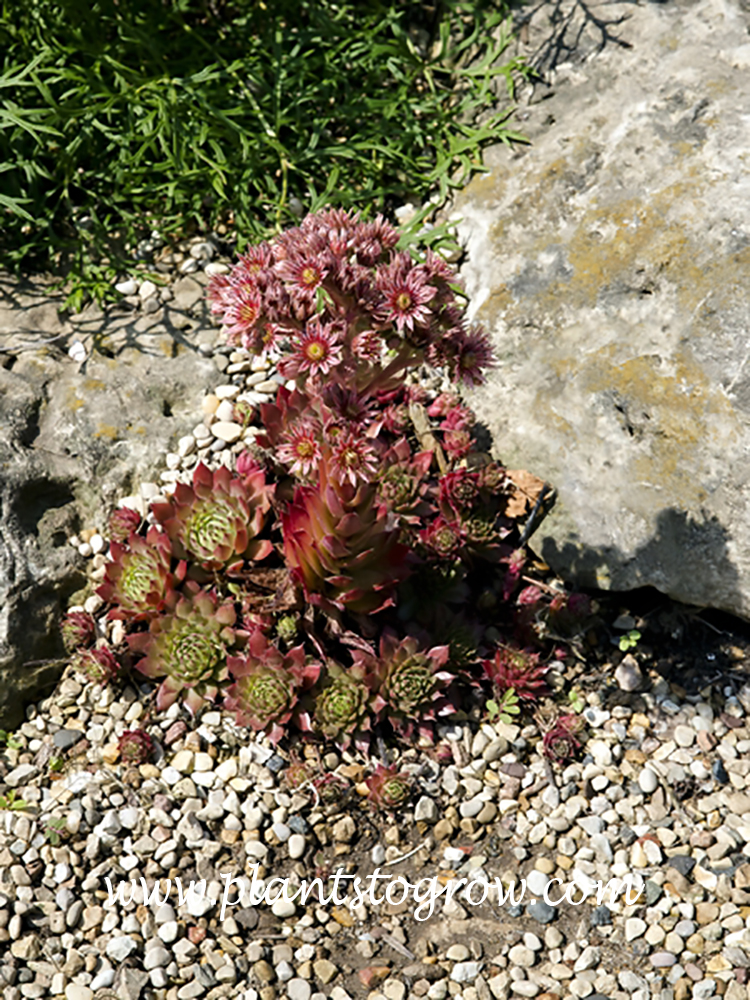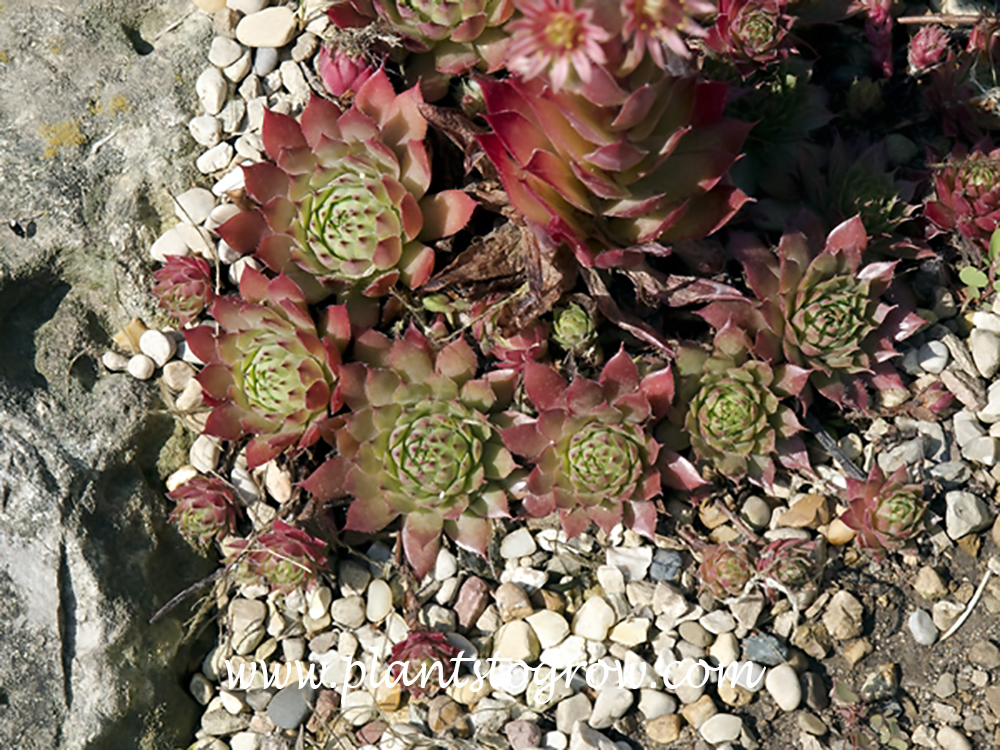| Description | Glowing Embers Hens and Chicks (Sempervivum tectorum) has rosettes that are a reddish color. |
|---|---|
| Pronunciation | (sem-per-VEEV-um)(tek-TOH-rum) |
| Plant Type | Perennials Hardy |
| Hardiness Zone | 3-8, AHS 8-1 |
| Sunlight | full to partial sun |
| Moisture | average, dry |
| Soil & Site | any type of soil as long as it is well drained |
| Temperature | cold hardy |
| Flowers | produced in clusters on the tip of a leafy flower stalk arising from the center of a rosette, after flowering the base rosette will die |
| Leaves | clusters of small reddish rosettes of succulent leaves |
| Roots | fibrous |
| Dimensions | foliage is low, flower stalks arise above the foliage |
| Propagation | seeds, division, rooting the rosettes |
| Cultivar Origin | Ed Skrocki in 1973 |
| Misc Facts | The common name House leek comes from the fact that it was believed that these plants prevent lightening from striking a house, so they were planted on the roof of houses. Sempervivum literally means live for ever and tectora means growing on roofs. The Hen is the larger rosette and the chicks are the smaller. Hence the name "Hens and Chicks". The plant is monocarpic meaning after the mother plant flowers it will die. AKA: Sempervivum Glowing Ember |
| Notes & Reference | #04-Herbaceous Perennial Plants (Allan Armitage), #40-Herbaceous Ornamental Plants (Steven Stills), #79-Perennials For Every Purpose (Larry Hodgson) |

Cart



